Some Indian Spices/Herbs, and How to Use Them
Introduction
I learnt to cook from my mother, who was an amazing cook. It was more of a watch and learn, rather than a spoken or instructional experience. In the cold winter days I would hang out in the kitchen to keep warm, and watch my mother cook with such ease. I was too young to realize what she was doing, but was intrigued by the ease at which she would operate. However, I did notice one very peculiar aspect of her cooking. She would always pay special attention while sautéing the spice mixes, never rushing through this process. Once this mix was ready, the meat, poultry, veggies or lentils (whatever was on the menu) would follow the mix at different intervals. However once that was completed, and the required liquid was added, the dish was on cruise control, only to be interrupted for a quick mix or turned off, adding a garnish and ready to eat. I was curious, and had to ask Mom (the master chef), why the first 10 to 20 minutes of the spice sautéing were soo important? Mom’s answer was simple.
“The three most important aspects of cooking a good Indian dish:
Choosing the right mix of spices for the dish you’re preparing.
Maintaining the right levels of heat to sauté the spice mix.
And, introducing the different spice to the mix, at the right intervals.”
These are words of wisdom from an amazing cook.
Indian spices aren’t just known for adding great taste to food; they’re also famous for their strong, pleasant aroma. Imagine each spice as a unique color of paint; just like each color has a place in a masterpiece, each spice plays a role in the kitchen. Once you understand a spice’s taste and aroma, you can freely experiment with them. Some chefs/cooks may disagree with me, but, there’s no right or wrong way to use spices in kitchen. It’s like creating a painting – you can paint a detailed countryside, or an abstract masterpiece, and both would be special.
Remember, just like in life, it’s all about trial and error. Don’t be afraid to experiment with spices or herbs in the kitchen. Trying and learning from mistakes is the fun way to become a master chef or just a proficient cook.
I believe, Winston Churchill said “Failure is not fatal, Success is not final. It is the courage to continue that counts.” So, don’t be afraid to fail, its how we learn to excel.
While there are many spices, let me share some common ones used in everyday cooking. You can decide which ones to use regularly – that’s the joy of cooking, making your own style.
According to “The ISO (International Organization for Standardization) there are 109 listed spices, and India produces 75 of them. That’s almost 70% of all the world’s spices, produced by India. In my opinion, India would be considered the “King of Spices.”
Familiarize yourself with these spices.
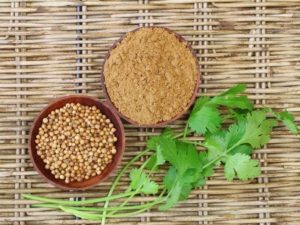 Coriander (Cilantro seeds)
Coriander (Cilantro seeds)
Coriander seeds can be used whole, or ground into a powder, whatever the recipe requires. In my opinion, coriander holds the title of the “Base Spice.” Among the vast array of spices found in the Indian kitchen, this one stands as essential to most every recipe. Their fragrance is a delightful fusion of citrusy tones, complemented by a subtle woody undertone. It’s important to understand, these seeds or powder should be exposed to gentle heat, allowing them to cook on a low flame for a maximum of 10 minutes. This practice often involves combining them with other spices in the cooking process.
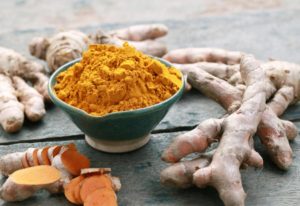 Turmeric (Haldi)
Turmeric (Haldi)
Turmeric, commonly known as Haldi, holds a significant place as a foundational spice in Indian cuisine. Derived from the root of the turmeric plant, it imparts a robust and earthy essence to dishes. Amongst the assortment of spices gracing Indian kitchens, turmeric distinguishes itself due to its wide array of health benefits, which have earned it the affectionate moniker “Mr. T” of spices. A mere teaspoon of this spice is generally sufficient to enhance the flavor of any dish. Similar to coriander, turmeric benefits from a gentle, prolonged simmer of around 10 minutes, when combined with other foundational spices.
 Cumin (Jira)
Cumin (Jira)
If you’re looking to elevate your flavors, Cumin is the go to spice. It’s a delectable addition to any recipe, with a touch of caraway or dill, and it’s a staple in most Indian cuisines. Usually, the seeds are rapidly fried in hot oil for about 10-15 seconds at the beginning of the dish, before introducing the foundation spices. In ground form, when paired with the base spices, it’s best to cook on low heat for 10 to 15 seconds. Similar to turmeric, cumin offers health benefits, providing B & E vitamins, along with minerals like iron and magnesium. Yet, grinding cumin enhances its absorbability, maximizing its advantages.
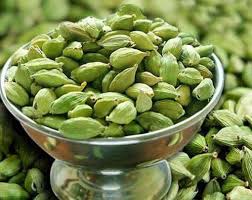 Green Cardamom (Choti Ilayachi)
Green Cardamom (Choti Ilayachi)
Green cardamom boasts a distinctive flavor and aroma, combining hints of licorice and eucalyptus due to its cineole content. This spice wonderfully enhances the aromatic and flavor profile of Indian dishes. Similar to Cumin, green cardamom is rapidly fried in hot oil for 10-15 seconds at the dish’s onset, before adding foundational spices. To truly experience its unique character, you’ll likely require four to six cardamom pods.
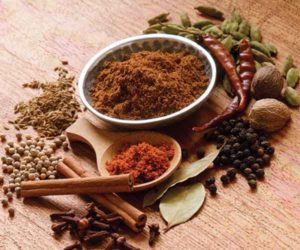 Garam Masala
Garam Masala
One of the most important spices in any Indian kitchen is the famous “Garam Masala.” Garam Masala is one of the most contentious spices in the Indian Kitchen. It’s not a spice on its own. It’s a combination of 8 to 19 ground spices; depending on the region, and how complex you’d like to get with the flavour and aroma. The list of ingredients will vary. I will not get into the complexities of making the different Garam Masalas (maybe a different blog post). You can always purchase a good store brand, depending on the combination of ingredients you prefer.
Here are some ingredients that may be present in a good Garam Masala: Cumin, Coriander, Cardamom, Cinnamon, Black Pepper, Cloves, Turmeric, and/or Nutmeg.
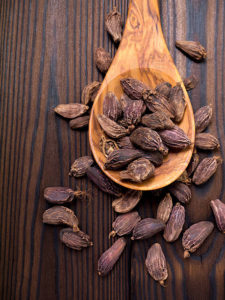 Black Cardamom (Kali Ilayachi)
Black Cardamom (Kali Ilayachi)
Black cardamom seeds have the same licorice, eucalyptus flavour as its little sister the green cardamom. However, they possess a slight smokiness due to slow drying process over an open flame which causes them to turn dark brown. An indispensable component in Indian cuisine, particularly for authentic flavor and aroma, black cardamom’s uniqueness is irreplaceable. I would consider it to be an important spice in the Indian Kitchen, especially if you’re serious about authentic Indian flavour & aroma. There is no alternative to the unique flavour & aroma of the black cardamom. Many Indian recipes incorporate a couple of black cardamom pods.
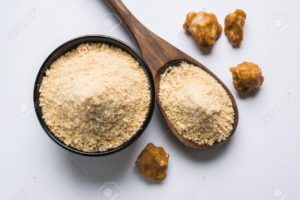 Asafoetida (Hing) Spice of The Gods
Asafoetida (Hing) Spice of The Gods
Asafoetida (hing) has a very pungent/unpleasant smell when raw. However, the Umami flavour it transmits when cooked, makes it is one of my favourite Indian spices. Cooking with hing is like cooking with one of the most aromatic spices in the world.
Add hing to the pan when the oil or butter is hot, and make sure it sizzles for about 10-15 seconds, before adding any herbs or other spices. It’s essential to use a modest amount, about ¼ to ½ teaspoon, and store it in an airtight container due to its pungent/potent aroma.
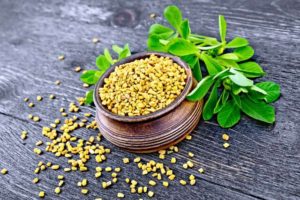 Fenugreek (Methi)
Fenugreek (Methi)
Fenugreek seeds are one of the other essential spices in Indian cooking. When the seeds are ground or powdered they are probably best recognized as one of the ingredient in Indian Curry. It is one of the most distinctive flavors in curry powder along with Cumin and Coriander. When cooked, Fenugreek has a sweet, nutty flavor with a hint of maple syrup and burnt sugar, however, can be extremely bitter when eaten raw. By itself, Fenugreek powder is not the most inviting spice in the pantry. It works best as part of a combination when used, especially alongside cumin and coriander. Because Fenugreek is a fiercely pungent spice, it has the potential to tremendously enhance a dish, or to ruin it if used incorrectly. Use sparingly, but don’t be afraid to use.
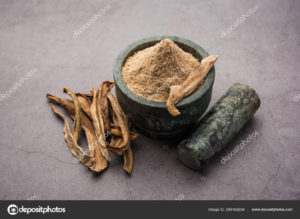
Mango Powder (Amchoor)
Amchoor, derived from dehydrated raw mango; the malic and citric acid in Amchoor adds a tangy/tarty flavour to any dish. If you cook Amchoor in the early stages or for too long, there is a possibility the outcome may leave a bitter after taste. Amchoor is definitely a flavour booster (The Indian Umami), if used correctly. Other chefs/cooks may have a different experience; however, this is my experience. Be very careful of clumping while sprinkling Amchoor. Also, don’t be fooled, the acidic properties of Amchoor are way tangier than lemon/lime.
Amchoor is used in preparing many Ayurvedic medicines. It contains many nutrients including vitamin A, E and C, and antioxidants that have been known to boost metabolism. Amchoor is also rich in iron.
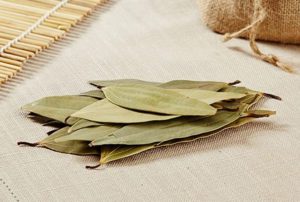 Tej Patta(Bay Leaves)
Tej Patta(Bay Leaves)
Tej Patta or Bay Leaf is an indispensable ingredient in the North Indian Cuisine.
It is used in The Indian Cuisine much the same manner as The European Bay Leaf. However, they are leafs of different trees. This olive green coloured leaf, with a slim blade, has a few veins running down the length of the leaf, and has a cinnamon, clove-like flavor. It’s incorporated into the Indian Dish as a whole leaf, and usually cooked for the length of the dish. The aromatic flavour of Tej Patta supports those of cinnamon and clove in most every Authentic Indian Dishes.
 Cinnamon/Cassia Bark (Dalachini)
Cinnamon/Cassia Bark (Dalachini)
Cinnamon, a complex spice with two primary types; it holds a central place in Indian cuisine. Cassia Cinnamon, mostly used in America, and Ceylon Cinnamon, often deemed “true cinnamon,” boasts a lighter hue and delicate floral aroma.
Cassia Cinnamon (Cinnamomum Cassia): Is the most widely used or available Cinnamon in The American or Canadian grocery stores. Cinnamomum Cassia is typically imported from India, Indonesia, China, and Vietnam. Cinnamon Cassia is a deep reddish-brown color with a sweet/spicy flavour and has a mild aroma to it.
Ceylon Cinnamon (Cinnamomum Verum): Comes from Sri Lanka or Madagascar, and is more commonly available in Europe and Mexico. However, there are specialty grocery stores in the USA which offer larger varieties of spices that will carry this type of Cinnamon. The Ceylon Cinnamon has a light brown colour, and is sweeter with a delicate floral like aroma to it. Cinnamomum verum or Ceylon Cinnamon is also called the true Cinnamon, and is slightly more expensive to purchase.
When using Cinnamon (either one of them) the barks are usually fried whole at the commencement of the Indian Dish.
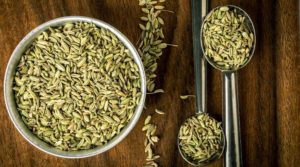 Fennel (Saunf)
Fennel (Saunf)
Fennel or Saunf as it’s called in Indian Cuisineis often used in tadka or tempering of dishes and in pickles & chutneys. Fennel has a very aromatic/taste similarity to Licorice. It’s also regarded as a digestive aid and a breath freshener, often chewed by a number of individuals post-dinner, akin to a “mint,” either sugar-coated or in its natural form.
 Star Anise (Chakra Phul)
Star Anise (Chakra Phul)
Star Anise tastes very much like fennel, however, it is sweet, sharpe and has a more distinct flavour to it. Star anise is one of the star ingredients in the preparation of the famous Indian Garam Masala. It is a delectable sauté spice, and is a key ingredient in the incredible tamarind chutney, found in many restaurants as a condiment/dipping sauce for samosas, and other Indian fritters (Pakoras).
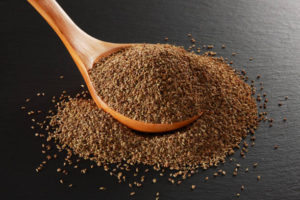
Carom (Ajwain)
You may think, or even call them “seeds,” however, Carom seeds are really the fruit of the Ajwain herb. Ajwain/Carom seeds are similar in looks to the cumin seed, with a greenish/brown color, however, very different in taste. The taste is a pungent, bitter stronger version of thyme; because the Carom fruit has a huge amount of Thymol in it that transfers to the seeds.
You can sauté Ajwain/Carom seeds in oil or even dry roast them on a pan before adding to a dish. In The Indian Cuisine, Ajwain/Carom seeds are added during the Tadka (to lentils/Daals) or the tempering process. Tadka is a widely used process in Indian Cuisine, which is similar to “tempering.” It is a process in which whole or ground spices/seeds are sautéed in hot oil along with tomatoes, onions, cilantro, curry leafs (if required) and the mixture is integrated into the dish, so the oil incorporates the flavours of the spices.
Please use Ajwain/Carom seeds in moderation, and sauté to golden brown (15-20 seconds in hot oil).
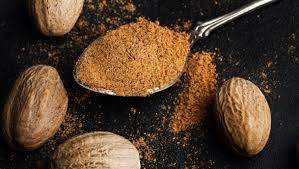 Nutmeg (Jaiphal)
Nutmeg (Jaiphal)
Nutmeg, Cinnamon, and Mace are different parts of the same parent tree. Nutmeg is the dried seed of the ripe fruit which looks like an apricot. Cinnamon is the stripped & dried bark of the same tree, while Mace (after being dried) is the fine web like covering over the nutmeg seed.
Nutmeg has a warm, spicy, nutty flavor, with a hint of clove. It is a common ingredient in the Indian Kitchen. It can be used in quite a few different forms; whole, crushed, sliced/shaved, grated or powdered.
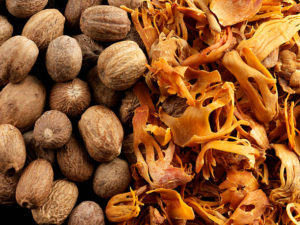 Mace (Javitri)[/caption]
Mace (Javitri)[/caption]
Nutmeg and Mace come from the same Nutmeg Tree. While Nutmeg is the seed inside the ripe fruit; the web like covering over the seed, after being removed and dried, is called Mace.
In terms of Flavour, mace could often be mistaken for Nutmeg. However, it has a stronger/sharper flavour than Nutmeg. They both have a warm and earthy aromatic flavour, while Mace is slightly sweet. Mace is commonly used in delicate dishes that need a savory and sweet flavour, like cakes, sweet potato and pumpkin pies. Mace can also be incorporated into broths, soups, curries, mashed potatoes and more, if, you need a subtle earthy aromatic sweet flavour.
Mace can be used two ways, either whole pieces called blades, or you can use it in powdered form (my preference).
One whole fried blade of Mace is enough to incorporate the flavour.
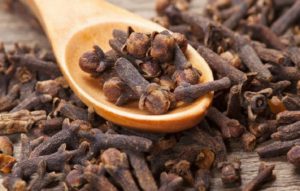 Cloves (Laung)
Cloves (Laung)
Cloves are the juvenile flower buds of the Myrtaceae tree which is native to Indonesia, but grown in other parts of the world too. Cloves can be bought whole, and then powdered; or you can buy the powdered version too if necessary. They are pink in colour when fresh; however, what we use as the spice is a dried version, which is a rust brown colour. They have an overwhelming aroma and are pungent, sweet and hot to the taste. The Indian palate has enjoyed this rich spice for thousands of years. We use it at every opportunity we get. Whole cloves are frequently used to flavor meat dishes, rice, soups, and breads.
Cloves are a very important ingredient in one of the most iconic Indian dishes “Biryani.”
 Mustard Seeds (Rai)
Mustard Seeds (Rai)
Well known to the Indian Kitchen, Mustard Seeds (Rai) provides a complex flavor to curries & sauces. Like many Indian spices, when cooking with Mustard Seeds (Rai), they should be added at the beginning of the dish. Frying the Mustard Seeds (Rai) at the start of the dish until the seed cracks open will incorporate the complex subtle floral, nutty, vanilla like undertone to the dish.
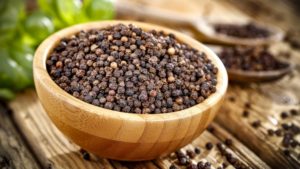 Black Pepper (Kali Mirch)
Black Pepper (Kali Mirch)
Black pepper is known as the “King of Spices,” because it holds a unique space in the average home; it is the most widely used spice in all major cuisines all over the world. While other spices are concealed in the dark corners of the pantry, black pepper arrogantly stands in shakers and grinders on the dining table and kitchen counters in possibly every home and restaurant worldwide.
Black pepper incorporates its sharp pungent, spicy flavour into a dish due to the presence of capsaicin and piperine. A hint of woody citrus also adds to black pepper’s appeal.
Black pepper is derived from the raw fruit of the black pepper plant (Piper nigrum).
The dried fruit turns very dark brown or black and is known as Peppercorn. Peppercorns can be used whole, or used ground for mixed spices or seasoning.
 Indian Red Chili (Lal Mirch)
Indian Red Chili (Lal Mirch)
In the Indian kitchen, Chilli powder is synonymous to Cayenne powder in the western kitchen. It is basically powdered dried red chillies, made from the locally grown variety of chillies. The Indian red chili is usually more floral than Cayenne, and is brighter red in colour. Some varieties of chillies may be spicier than others so read the instructions on the packaging carefully. Add Chilli/Cayenne powder gradually to the dish at or near the very end, adjusting the heat level of your dish accordingly.
 Curry leaves/Kadhipatta (Herb)
Curry leaves/Kadhipatta (Herb)
Curry leaves are the leaves of the Murraya koenigii. They should be used fresh; however, they are available in dried form too. These trees are native to India, and grow in the sub tropical regions. The bright green leaves are very aromatic when sautéed, and are used in tadka and tempering of many Indian Dishes. Once again, like with most Indian spices, fresh Curry leaves should be sautéed at the start of the dish to add the pungent, citrus-like aroma, or they can be shredded and added to a dish near the completion. Curry leaves incorporate well with coconut, turmeric and mustard seeds in lentils, slow-cooked curries, fish, vegetables, and chutneys.
Curry leaves are one of the most mysterious and underrated Indian spices, and by no means the least significant Indian spice in the Indian kitchen. They are mainly used for cooking, however, are also widely used in Ayurvedic medicines.
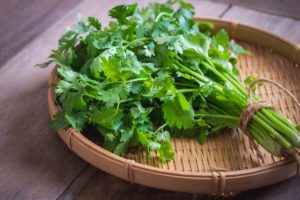 Fresh Green Cilantro (Herb)
Fresh Green Cilantro (Herb)
Cilantro is described as having a warm, spicy, and nutty flavor, however, tastes fresh and citrusy to some but soapy to others (about 4-14% of the population). The leaves of cilantro are central as a flavourful garnish for virtually any Indian dish. However, it most definitely will enhance the flavour of deeply flavoured daals, and heartier meat dishes (debatable). A word of caution; when working with cilantro, remember, some people find the flavour/taste to be unpleasant. Go Easy!
And there you have it. Some Indian Spices to start cooking.
The information in my blogs posts should not be considered, or accepted as professional advice. It is based on personal experiences, and is for reading purposes only.


You May Also Like

How to Avoid Being an Annoying Tourist While Dining Abroad
June 6, 2024
Understanding Different Types of Collagen and Their Absorption
June 4, 2024